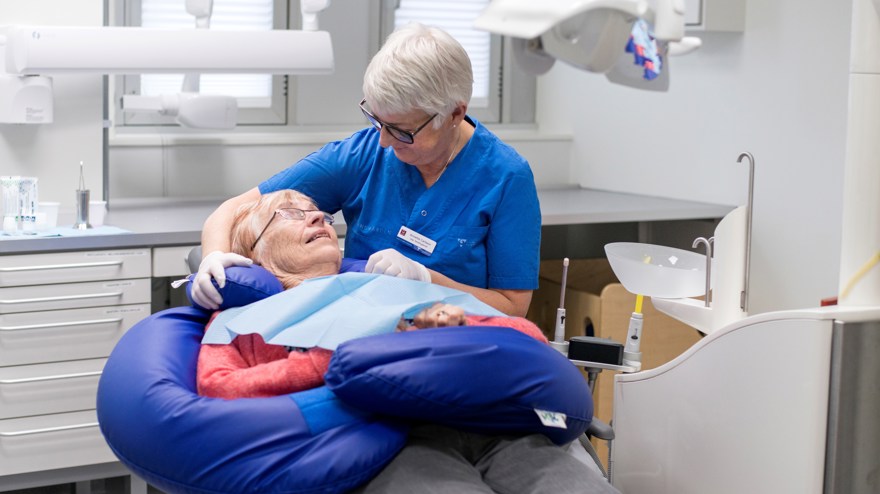Huntington Disease

This is the text from the oral care programme for people with Huntington Disease.
Mun-H-Center, a Swedish orofacial resource center for rare diseases and a specialist dental clinic, have many years of experience from clinical treatment of patients with huntington’s disease. In this pamphlet we summarise the most important aspects of meeting and treating this group of patients.
Background
Huntington’s disease is a progressive neurological and neuropsychiatric disorder that entails motor function, cognitive and psychiatric symptoms. The first signs of the disease usually become noticeable between 30 and 50 years of age. The disease is characterised by difficulties with balance and involuntary, jerky movements that increase in time. In the late stages of the disease it is common for the movements to become reduced and for muscle stiffness to develop.
The abilities to understand, learn, plan and reason, and to make decisions gradually deteriorate. Psychiatric symptoms including anxiety, apathy and depression may occur. Forgetfulness, concentration difficulties, and a reduced ability to take initiatives are other common symptoms. Speech disorders (dysarthria) and difficulties swallowing (dysphagia) develop gradually and eventually become very pronounced.
Dental Care for People with Huntington’s Disease
Need for preventive dental care
Individuals with Huntington’s disease need regular and reinforced preventive dental care. Their capacity for self-care gradually diminishes. Psychiatric problems and cognitive dif culties also often lead to a reduced motivation to take care of their oral hygiene. The disease may progress rapidly. It is valuable if you establish contact as early as possible in the course of the disease, in order to get to know the patient and create secure routines. It is important to have a long term treatment plan. The choice of conservative treatment should be given careful consideration. Complex constructions have to be possible to manage even as the patient’s pathology worsens.
Neurological symptoms and dental treatment
Involuntary movements often lead to considerable difficulties in carrying out oral and dental care, and require special attention. Oral function is also affected. There is an increased risk of aspiration and choking, which must be taken into consideration in dental treatment.
Risk factors for oral health
Involuntary movements mean an increased calorie requirement, and many patients therefore have to eat frequently. The movements also lead to considerable difficulties managing oral hygiene. The risk of developing oral diseases such as caries and periodontitis is also increased by food remaining in the oral cavity due to the patient’s reduced ability to self cleanse. Gastroesphageal reflux is another symptom to be aware of and treat. Dry mouth is a common symptom and increases the risk of for example caries, fragile oral mucosa, and swallowing difficulties.
Advice for dependents and carers
During the disease progress dependents and carers will need to help the patient carry out oral hygiene at home. In order for them to be able to do this in the best possible way they need to receive practical guidance from dental care services, and have access to oral hygiene tools.
Printed version
If you want more guidance about dental treatment and oral care for those with huntington’s disease, or if you have any comments on the content of the oral care programme, please contact us.
About the programme
- Authors: Annette Carlsson, Dental Hygienist, and Åsa Mårtensson, Specialist Dentist in Oral Medicine, Mun-H-Center
- Layout and photographs: Inga Svensson, Communicator, Mun-H-Center. Bottom image page one in section Recommended oral care programme: Lasal
- Printed: 2019
Other languages
- Swedish and German - change language in the top menu to go to the Swedish website.




